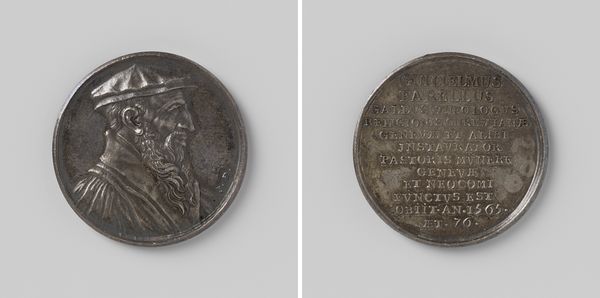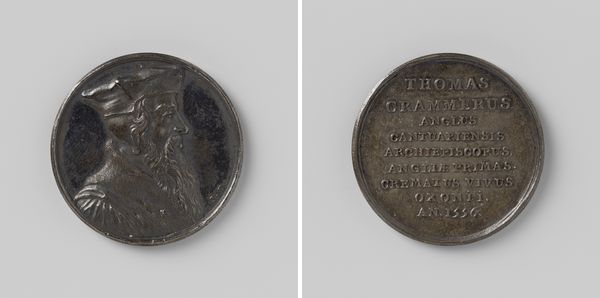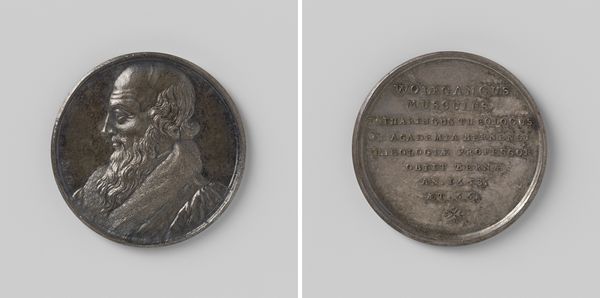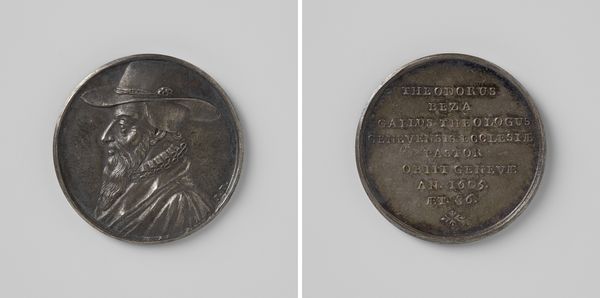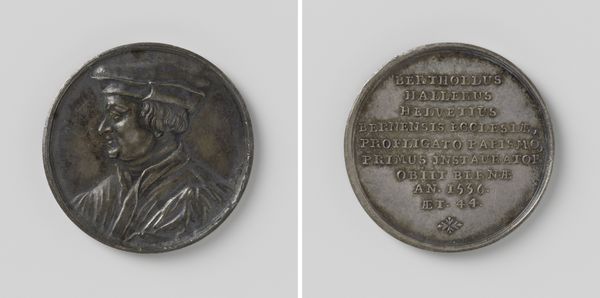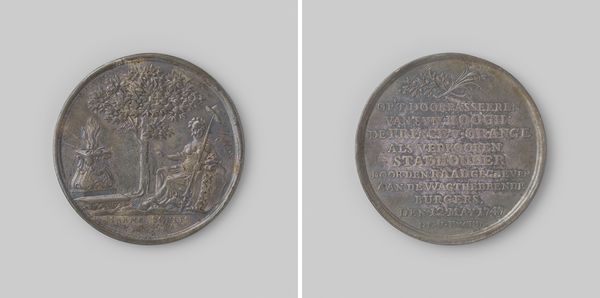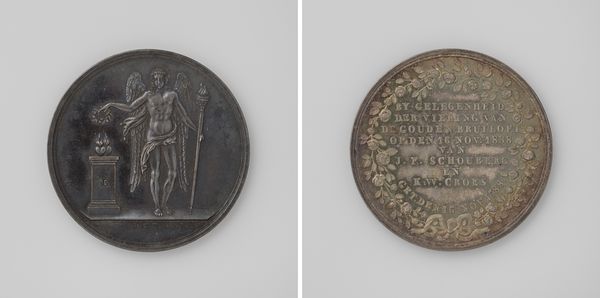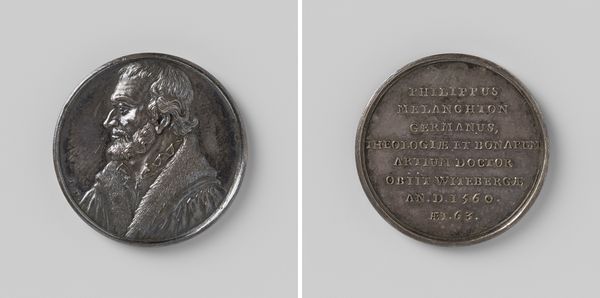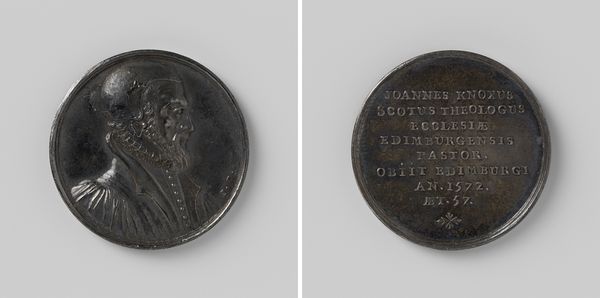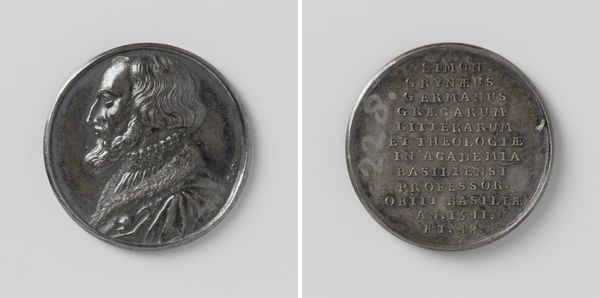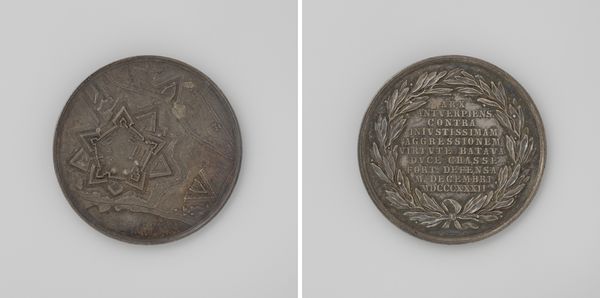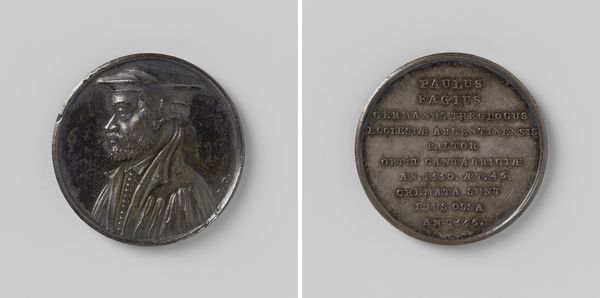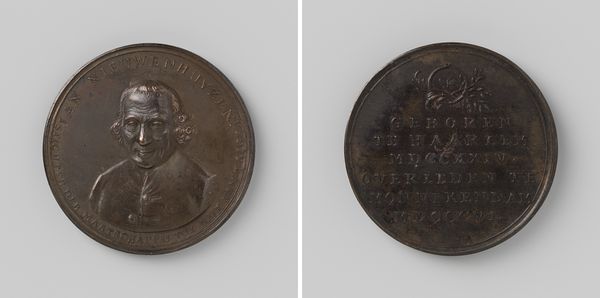
Verbranding van de resten van Martin Bucerus, Duits theoloog en professor te Cambridge, op de markt van Cambridge 1725
0:00
0:00
metal, sculpture
#
portrait
#
baroque
#
metal
#
sculpture
#
sculpture
#
history-painting
Dimensions: diameter 2.8 cm, weight 104 gr
Copyright: Rijks Museum: Open Domain
This medal was made by Jean Dassier, and it commemorates the burning of the remains of Martin Bucerus, a German theologian and professor at Cambridge. The medal’s stark imagery is achieved through the use of die-stamping. This process involves hammering metal between two dies – positive and negative forms – to create a detailed relief. Here, the cool-toned metal highlights both Bucerus's profile and the inscription on the reverse, which details the posthumous execution. Die-stamping allowed for the relatively efficient production of multiples, connecting the work to broader histories of print and dissemination. While seemingly simple, the creation of dies and the stamping process require tremendous force and precision, indicating both skilled labor and access to specialized equipment. The very materiality of the medal, therefore, speaks to the social and political contexts of its creation, a potent reminder of the enduring power of objects to convey complex narratives.
Comments
No comments
Be the first to comment and join the conversation on the ultimate creative platform.
